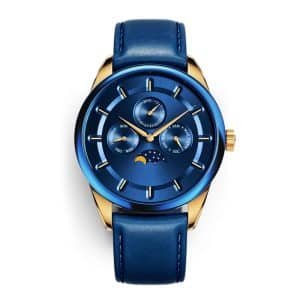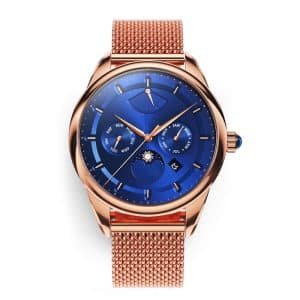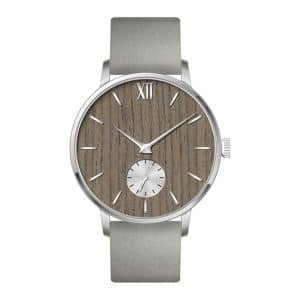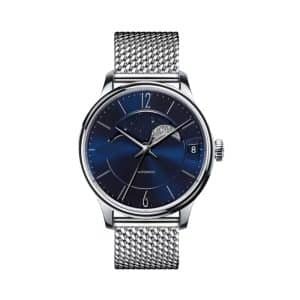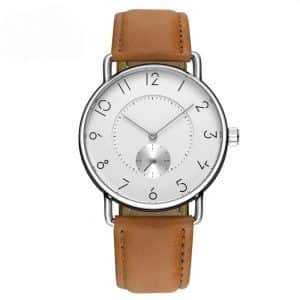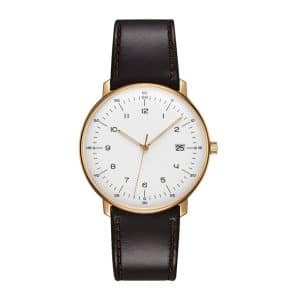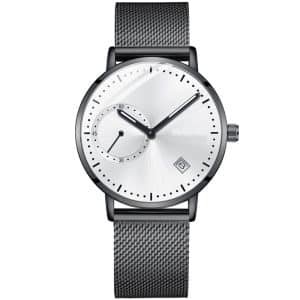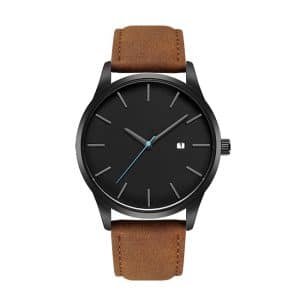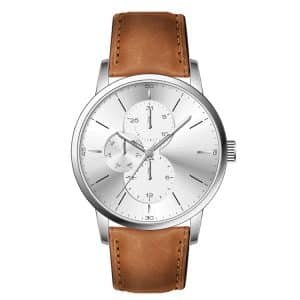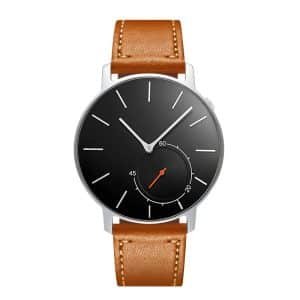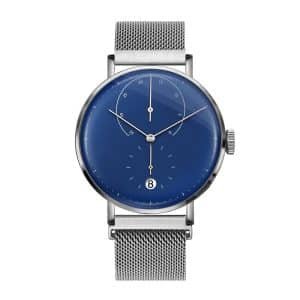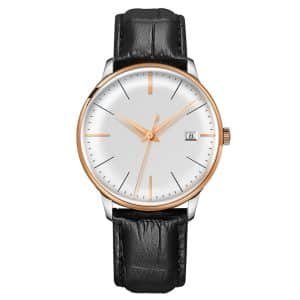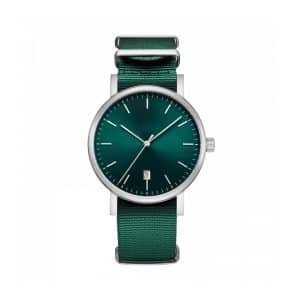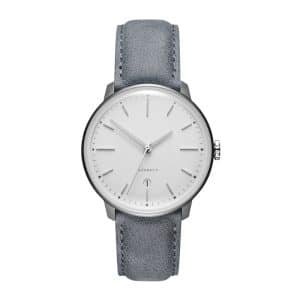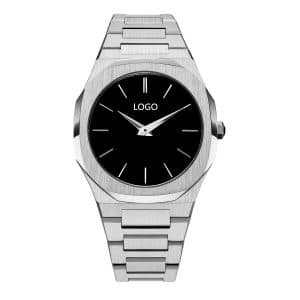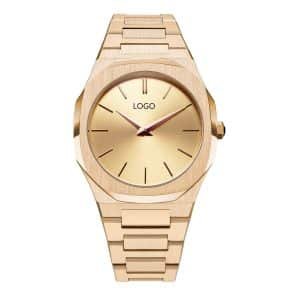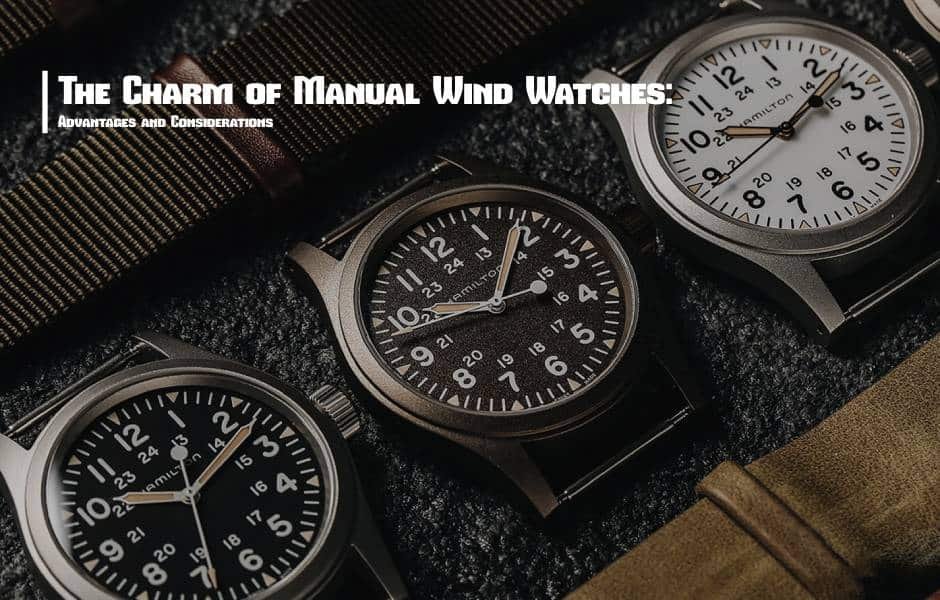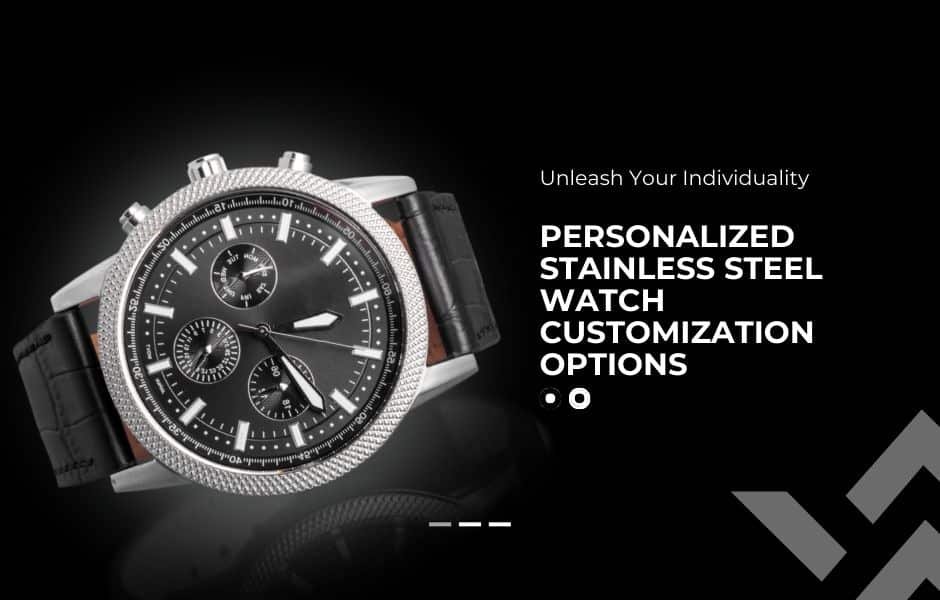The fascinating world of watches is much more than just telling time. At the heart of every timepiece lies a remarkable mechanism that drives its timekeeping capabilities – the watch movement. This intricate assembly of precisely engineered components is responsible for the intricate dance of the hands that grace the watch’s dial, keeping us on schedule and in sync with the rhythms of life.
Understanding watch movements is essential for any watch enthusiast or collector. It’s akin to comprehending the engine that powers an automobile – a fundamental knowledge that unlocks a deeper appreciation for the craftsmanship and engineering marvels hidden beneath the watch’s exterior.
Watch movements can be broadly categorized into two main types: mechanical and quartz. Each type encompasses a diverse range of variations, each with its own unique operating principles, advantages, and drawbacks. From the centuries-old legacy of mechanical marvels to the modern precision of quartz technology, the world of watch movements is a captivating tapestry woven with innovation, tradition, and a relentless pursuit of timekeeping excellence.
In this comprehensive guide, we will embark on a journey through the intricate realm of watch movements, exploring their types, mechanisms, and the renowned brands that have mastered their art. Get ready to unlock the secrets that lie at the heart of your timepiece, and gain a deeper understanding of the passion that drives watch enthusiasts worldwide.

Tracing the Evolution of Watch Movements
The journey of watch movements spans centuries, marked by remarkable innovations and groundbreaking developments that have shaped the watchmaking industry as we know it today. From the earliest mechanical marvels to the quartz revolution and beyond, the evolution of watch movements is a testament to human ingenuity and the relentless pursuit of precision timekeeping.
Early Mechanical Movement Advancements
The origins of mechanical watch movements can be traced back to the 16th century, with the development of the mainspring and the introduction of the balance wheel and escapement system. These early innovations laid the foundation for the creation of portable timekeepers, enabling the transition from larger clocks to more compact and wearable timepieces.
Throughout the 17th and 18th centuries, watchmakers continued to refine and improve upon the mechanical movement design, introducing advancements such as the cylinder escapement, the lever escapement, and the incorporation of jewel bearings for increased efficiency and accuracy.
The Quartz Revolution
While mechanical movements dominated the watchmaking landscape for centuries, the advent of quartz technology in the 1960s ushered in a pivotal era known as the Quartz Revolution. The first quartz wristwatch, the Seiko Astron, was unveiled in 1969, leveraging the precise oscillations of a quartz crystal to achieve unparalleled accuracy and reliability.
The quartz revolution disrupted the industry, leading to a paradigm shift in watchmaking. Swiss manufacturers, who had long been the vanguards of mechanical watchmaking, were forced to adapt and embrace the new quartz technology to remain competitive in the market.
Modern Breakthroughs and Innovations
As the watchmaking industry continued to evolve, manufacturers sought to push the boundaries of both mechanical and quartz movements, introducing groundbreaking innovations and technologies.
In the realm of mechanical movements, advancements such as the co-axial escapement, silicon components, and the incorporation of advanced materials like ceramic and carbon fiber have significantly improved accuracy, durability, and resistance to magnetic fields.
Quartz movements, too, have undergone remarkable advancements, with the introduction of features like perpetual calendars, multi-timezone functions, and even GPS timekeeping capabilities.
Additionally, the rise of smartwatches and connected timepieces has introduced a new frontier in the world of watch movements, blending traditional timekeeping with advanced electronics and smart capabilities.
As we look to the future, the evolution of watch movements continues, driven by the relentless pursuit of innovation, precision, and the seamless integration of cutting-edge technologies. Each milestone in this ongoing journey serves as a testament to the ingenuity and craftsmanship that have defined the watchmaking industry for centuries, captivating enthusiasts and collectors worldwide.

Mechanical Watch Movements
Mechanical watch movements represent the traditional and time-honored art of watchmaking. These intricate mechanisms have been the driving force behind timekeeping for centuries, captivating enthusiasts with their intricate engineering and mesmerizing motion. Mechanical movements can be further divided into two distinct categories: hand-wound and automatic (self-winding).
Hand-Wound Movements
Hand-wound movements, also known as manual-wind movements, are the oldest and most traditional type of mechanical watch movement. These movements rely on the user manually winding the mainspring by turning the crown, which stores energy to power the watch’s timekeeping functions.
Operating Principle: The mainspring, a tightly coiled metal spring, serves as the power source. As it unwinds, it releases energy through a series of gears (the gear train), which ultimately drives the escapement and the oscillating balance wheel. This oscillating motion regulates the release of energy, allowing the watch to keep time accurately.
Components: Key components include the mainspring, gear train, escapement, and balance wheel. The escapement, with its intricate lever and pallet system, acts as a brake, controlling the release of energy from the mainspring to the balance wheel.
Advantages and Disadvantages: Hand-wound movements offer a pure and traditional watchmaking experience, with a certain romantic appeal. However, they require regular winding (typically every 24-36 hours) and may be less convenient for daily wear compared to self-winding alternatives.

Automatic (Self-Winding) Movements
Automatic, or self-winding, movements represent a significant advancement in mechanical watchmaking. These movements harness the natural motion of the wearer’s wrist to wind the mainspring automatically, eliminating the need for manual winding.
Operating Principle: In addition to the components found in a hand-wound movement, automatic movements incorporate a weighted rotor that rotates in response to the wearer’s wrist movements. This rotation winds the mainspring, storing energy to power the watch.
Components: The rotor, winding mechanism, and a slipping device (to prevent overwinding) are the key additional components in an automatic movement.
Advantages and Disadvantages: Automatic movements offer unmatched convenience, as the watch winds itself through daily wear. However, they can be more complex and may require periodic servicing to ensure smooth operation of the self-winding mechanism.
Prominent mechanical movement brands, such as ETA (owned by Swatch Group), Sellita, and Miyota, have long been at the forefront of innovation and quality in both hand-wound and automatic movements. These manufacturers supply movements to numerous watch brands, allowing for a diverse range of timepieces powered by their proven mechanical calibers.
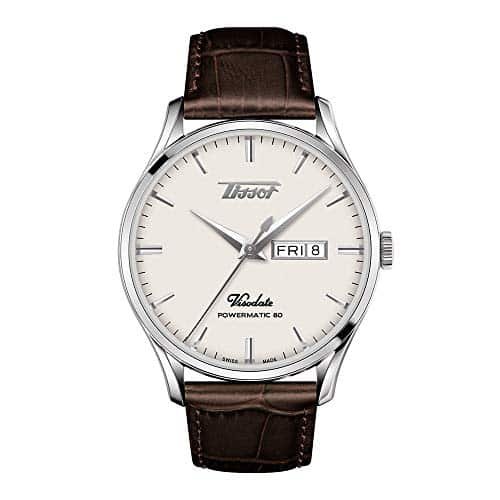
Quartz Watch Movements
While mechanical movements have a rich heritage, quartz watch movements revolutionized the watchmaking industry with their unparalleled accuracy and reliability. These movements harness the precise oscillations of a quartz crystal to keep time with astonishing precision.
Operating Principle:
At the heart of a quartz movement lies a quartz crystal that vibrates at a precise frequency when subjected to an electrical current. These vibrations are detected by an integrated circuit, which then generates regular electrical pulses. These pulses drive a stepping motor that advances the watch’s gears and hands in precise increments, resulting in highly accurate timekeeping.
Advantages and Disadvantages:
Quartz movements offer exceptional accuracy, often deviating by just a few seconds per month. They are also extremely durable, require little maintenance, and are generally more affordable than their mechanical counterparts. However, some enthusiasts argue that quartz movements lack the charm and craftsmanship of traditional mechanical movements.
Types of Quartz Movements:
Analog Quartz: These movements drive traditional hour, minute, and second hands, much like mechanical watches, but with quartz precision.
Digital Quartz: Rather than using hands, digital quartz movements display the time on a liquid crystal display (LCD) or other digital readout.
Prominent Quartz Movement Brands:
Several manufacturers have established themselves as leaders in the production of high-quality quartz movements, including Ronda (part of the Swatch Group), ETA, and Miyota. These brands supply movements to a wide range of watch companies, enabling them to offer precise and reliable quartz timepieces.
Quartz movements have democratized timekeeping by offering unparalleled accuracy at an accessible price point. While they may lack the romantic allure of mechanical movements, their precision and convenience have made them a popular choice for many watch enthusiasts and casual wearers alike.

Specialty Watch Movements
While mechanical and quartz movements are the two main categories, the world of watchmaking has given rise to several innovative and specialized movement types that cater to specific needs and preferences.
Kinetic Movements
Kinetic movements, pioneered by Seiko, combine the best of both worlds – the self-winding capabilities of mechanical movements and the precision of quartz technology. These movements harness the kinetic energy generated by the wearer’s wrist motions to charge a rechargeable battery that powers the quartz timekeeping module.
Solar-Powered Movements
Solar-powered movements, such as those found in Citizen’s Eco-Drive watches, derive their energy from light. A solar cell beneath the watch’s dial converts light energy into electrical energy, which is then stored in a rechargeable battery. This eco-friendly technology eliminates the need for regular battery replacements, making these watches a sustainable choice.
Spring Drive Movements
Seiko’s Spring Drive movements represent a unique fusion of mechanical and quartz technologies. While the mainspring and gear train operate mechanically, a quartz crystal regulates the motion of the glide wheel, ensuring unparalleled precision. This hybrid movement combines the soul of mechanical watchmaking with the accuracy of quartz, offering a truly unique timekeeping experience.
Eco-Drive Movements
Similar to solar-powered movements, Eco-Drive movements, developed by Citizen, are powered by any light source, whether natural or artificial. This innovative technology captures and stores energy in a rechargeable cell, eliminating the need for battery replacements and promoting environmental sustainability.
These specialty movements showcase the ingenuity of watchmakers and their relentless pursuit of innovation. Whether driven by sustainability, precision, or a desire to push the boundaries of watchmaking, these movements offer unique experiences tailored to the diverse preferences of watch enthusiasts.

Complications in Watch Movements
While telling time is the primary function of a watch, many timepieces incorporate additional features or “complications” that showcase the ingenuity of watchmakers. These complications not only enhance the functionality of a watch but also demonstrate the brand’s mastery of intricate mechanics.
Chronograph
One of the most popular and practical complications, a chronograph allows the watch to function as a stopwatch, measuring elapsed time with remarkable precision. This complication typically includes additional subdials on the watch face to display the chronograph minutes, hours, and sometimes even fractions of a second.
GMT/World Timer
For frequent travelers and globetrotters, a GMT (Greenwich Mean Time) or World Timer complication is invaluable. These complications allow the wearer to track multiple time zones simultaneously, either through an additional 24-hour hand or a rotating bezel or dial displaying various cities and their corresponding time zones.
Perpetual Calendar
A perpetual calendar is a true feat of mechanical engineering. This complication not only displays the date, day, and month but also automatically accounts for the varying lengths of months, including leap years. Once set, a perpetual calendar can theoretically run indefinitely without requiring adjustments until the year 2100 (or later, for more advanced models).
Tourbillon
The tourbillon is a mesmerizing complication that embodies the pinnacle of watchmaking artistry. This rotating cage, typically visible through an aperture on the dial, houses the escapement and balance wheel. By constantly rotating, it aims to counteract the effects of gravity on the timekeeping precision, although its modern significance is more aesthetic than functional.
Other complications
The world of watch complications is vast and ever-evolving, with watchmakers continuously pushing boundaries. Other notable complications include minute repeaters (which chime the time on demand), moon phase indicators, equation of time displays, and even intricate astronomical complications that track celestial bodies.
These complications not only showcase the brand’s horological prowess but also cater to the diverse needs and desires of watch enthusiasts. From practical functionality to artistic expression, complications elevate a timepiece beyond mere timekeeping, transforming it into a wearable work of mechanical art.
Watch Movement Brands and Manufacturers
The world of watch movements is shaped by a diverse array of brands and manufacturers, each with their own unique heritage, expertise, and approach to horological innovation. From renowned Swiss houses to emerging players across the globe, the landscape of movement makers is rich and varied.
Overview of Renowned Movement Manufacturers
While many watch brands design and produce their own in-house movements, several specialized manufacturers have established themselves as leading suppliers of high-quality movements to the industry. These include:
- ETA (Swatch Group): One of the largest and most well-known movement makers, ETA has been at the forefront of both mechanical and quartz movement production for decades.
- Sellita: A leading manufacturer of mechanical movements, Sellita is renowned for its reliable and affordable calibers, often used by independent watchmakers and micro-brands.
- Miyota (Citizen Group): Known for their expertise in both mechanical and quartz movements, Miyota movements power watches across various price points and market segments.
- Ronda (Swatch Group): Specializing in quartz movements, Ronda has been a driving force behind the development of innovative and precise quartz calibers.
In-House Movements vs. Third-Party Movements
Watch enthusiasts often draw a distinction between in-house movements, designed and manufactured by the watch brand itself, and third-party movements, which are sourced from external suppliers.
In-house movements are often seen as a hallmark of a brand’s watchmaking prowess, allowing for greater control over design, quality, and exclusivity. However, third-party movements from reputable suppliers can also offer excellent quality and reliability at a more accessible price point.
Prominent Watch Brands with In-House Movements
Several prestigious watch brands have invested heavily in developing and producing their own in-house movements, showcasing their mastery of the watchmaking craft. Some notable examples include:
- Rolex: Known for their robust and reliable in-house calibers, Rolex movements are a benchmark in the industry, often incorporating innovative materials and technologies.
- Omega: Omega’s in-house movements, such as the Co-Axial escapement, showcase the brand’s commitment to precision and innovation.
- Patek Philippe: Revered for their haute horlogerie creations, Patek Philippe’s in-house movements are true marvels of engineering and finishing.
While in-house movements often command a premium, they represent the pinnacle of watchmaking expertise and are highly sought after by collectors and enthusiasts alike.
Major Watch Movement Manufacturers by Region
While Switzerland has long been the epicenter of the watchmaking industry, other regions and countries have also made significant contributions to the development and production of watch movements. Let’s explore some of the prominent movement manufacturers from around the world.
Swiss Manufacturers
- ETA (Swatch Group) – One of the largest and most renowned Swiss movement makers, supplying calibers to numerous watch brands.
- Sellita – A leading supplier of high-quality Swiss mechanical movements, often used by independent watchmakers.
- Ronda (Swatch Group) – Specialized in quartz movements, Ronda is a driving force behind precise Swiss quartz calibers.
Japanese Manufacturers
- Miyota (Citizen Group) – Miyota is renowned for its reliable mechanical and quartz movements, powering watches globally.
- Seiko – In addition to their in-house movements, Seiko also produces movements for other brands, particularly in the mid-range market segment.
German Manufacturers
- Glashutte Original – Known for their exquisitely finished in-house movements, adhering to the traditions of Glashutte watchmaking.
- Tutima – This German brand is respected for producing robust and precise in-house calibers for their tool watches.
Asian Manufacturers (Outside Japan)
- Sea-Gull (China) – One of the oldest watch manufacturers in China, producing affordable mechanical movements.
- Orient (Japan/China) – Offering reliable in-house mechanical calibers at accessible price points for enthusiasts.
While Swiss manufacturers have long dominated the high-end segment, watchmakers from other regions have carved their own niches, offering quality movements across various price points and styles. This global diversity in movement production contributes to the rich tapestry of the watchmaking industry.
Conclusion
The world of watch movements is a captivating tapestry of tradition, innovation, and precision craftsmanship. From the centuries-old legacy of mechanical marvels to the modern advancements in quartz and specialty movements, each type of movement offers a unique horological experience.
Mechanical movements, both hand-wound and automatic, continue to captivate enthusiasts with their intricate engineering and mesmerizing motion. The sight of a finely finished movement, with its array of precisely engineered components working in harmony, is a testament to the watchmaker’s art.
Quartz movements, on the other hand, have revolutionized timekeeping with their unparalleled accuracy and reliability. While they may lack the romantic allure of mechanical movements, their convenience and affordability have made them a popular choice for everyday wear.
Specialty movements, such as kinetic, solar-powered, and hybrid calibers, showcase the ingenuity of watchmakers and their commitment to pushing boundaries. These innovative solutions cater to diverse needs and preferences, offering unique experiences that blend tradition with cutting-edge technology.
Moreover, the world of complications adds another layer of complexity and artistry to watch movements. From chronographs and GMT functions to the mesmerizing tourbillon and intricate astronomical displays, these complications elevate timepieces to the realm of wearable art, showcasing the brands’ mastery of micro-mechanical engineering.
As watch enthusiasts and collectors, understanding the intricacies of watch movements is crucial to appreciating the craftsmanship and passion that goes into creating these miniature marvels. Whether you favor the traditional charm of mechanical movements or the modern precision of quartz, or perhaps a harmonious fusion of the two, the world of watch movements offers a captivating journey of discovery.
Ultimately, the choice of movement comes down to personal preference, lifestyle, and the intended purpose of the timepiece. But regardless of your inclination, delving into the realm of watch movements will undoubtedly deepen your appreciation for the art of timekeeping and the exceptional feats of human ingenuity that power these tiny mechanical wonders on our wrists.
Frequently Asked Questions about Watch Movements
There is no definitive “better” option as it depends on personal preferences. Mechanical watches offer a traditional watchmaking experience with intricate craftsmanship, while quartz watches provide superior accuracy and low maintenance. Determine which factors are most important to you.
Mechanical watches require a significantly higher level of craftsmanship and labor-intensive assembly, often with decorative finishing. Many prestigious brands also use in-house mechanical movements adding to the cost.
As a general guideline, mechanical watches should be serviced every 3-5 years to ensure proper lubrication and timekeeping accuracy.
Observe the second hand. A mechanical watch will have a smooth sweeping motion, while a quartz watch ticks in incremental steps.
Hand-wound mechanical: 24-48 hours. Automatic mechanical: 38-72 hours. Basic quartz: 2-5 years (battery life).
Prestigious brands like Rolex, Omega, Patek Philippe, and Audemars Piguet manufacture their own in-house movements.
A tourbillon is a mechanism that continuously rotates the entire escapement and balance wheel to counteract gravitational effects on timekeeping accuracy, although more for aesthetic purposes today.
Disassembly, cleaning, lubricating, adjusting, reassembly, and regulating the movement for optimal timekeeping.
Request service history details and have the movement evaluated by a qualified watchmaker. Erratic timekeeping can indicate service needs.
Automatic (self-winding) movements use an oscillating rotor to wind the mainspring via natural wrist motion, while hand-wound require manually winding the crown periodically.
Solar movements are the most accurate, with just a few seconds of deviations per month.
Mechanical movements can vary more, with deviations of a few seconds to several seconds per day.
Automatic movements fall somewhere in between but are most often similar to mechanical movements.
The quality of a watch movement can vary significantly depending on its craftsmanship, brand reputation, and materials used.
Some brands specialize in producing high-quality movements, while others prioritize affordability. You’ll need to pay a bigger price tag if you want a high-quality watch.
While mechanical movements generally are less accurate than solar movements, some high-end mechanical watches can be extremely accurate through careful calibration and adjustment.
However, solar watches are still more consistently precise. If you value precise time reading, you should consider purchasing a high-quality solar watch.
Your next watch choice should depend on what you prioritize in your watch and your budget. If you appreciate the craftsmanship and don’t mind winding your watch regularly, a mechanical movement might be for you.
If you’re worried about overwinding your watch, don’t be. With a mechanical watch, simply stop winding when you feel resistance.
If accuracy and low maintenance are crucial, consider a solar movement. If you want a blend of traditional styles and convenience, go for an automatic movement. All watch types will have high-quality, stylish options available to you.
Related Posts
- The Ultimate Guide To Watch Materials: Pros, Cons, And What To Consider
- Unveiling The Secrets Of Stainless Steel Watch Materials
- Advantages Of Stainless Steel For OEM/ODM Watch Manufacturing
- The Difference Between Automatic And Hand-Wound Movements
- China Watch Factory – Custom Watch Manufacturing Services
- The Anatomy Of A Watch – Understanding The Different Parts
- ODM Vs OEM Watch: Understanding The Difference In Watch Manufacturing Services
- How To Find The Best Watch Manufacturing Company For Your Needs
- How Much Does It Really Cost To Manufacture Your Own Watch?
- Discover High-Quality Watches From A Leading Chinese Watch Manufacturer
- Customize Your Business Logo Watch And Make A Strong Brand Impression
- Guide: How To Establish Your Own Watch Brand In Simple Steps
- The Charm Of Manual Wind Watches: Advantages And Considerations


